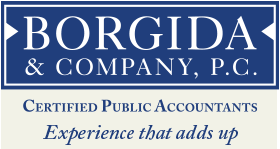Half the year is in the books. Many people are playing golf, going to the beach or having a barbeque. It is also the time however to have your Mid-Year Tax Planning. Here are 3 Easy Steps to make this happen:
Run a Tax Projection
As a starting point, review your 2012 income tax return. Then project out the year 2013 as to what might be different. Bonuses, stock options and capital gains are some examples of what might be different. Use this to project what your taxable income and income tax may be.
Adjust Your Withholding and / or Estimated Taxes
There are penalties for failure to pay your taxes on time. For taxpayers with just wages and withholdings this normally shouldn’t be an issue. Employees can adjust their withholding by filing an updated W-4 with their employer. Connecticut employees would submit an updated CT-W-4 to adjust their Connecticut withholding.
For the self-employed and perhaps retirees with an investment portfolio they may have to pay estimated taxes. These taxes are due quarterly in April, June, September and January. Taxpayers whose income is over $150,000 can avoid an underpayment of estimated tax penalty by paying in either 110% of the prior year’s tax or 90% of the current year’s tax. Federal estimated taxes are paid on Form 1040-ES. Connecticut estimated taxes are paid on CT-1040ES.
Adopt a Strategy
There are many potential tax planning opportunities in the tax code. You just have to figure out which ones might be appropriate for you. For example, many employees have the opportunity to participate in their 401(k) plan at work. This allows them to save for retirement on a tax-deferred basis. Some employers will offer a match. If your employer offers a match you really need to enroll in the 401(k) plan and contribute at least the amount where you can get the maximum match.
For other taxpayers perhaps a Roth Conversion makes sense. This is where funds are withdrawn from your IRA, taxed and then put into your Roth IRA. So as to maximize this strategy, it helps to have cash from another source so as to pay the income tax. This will allow the existing IRA to be converted to a Roth IRA in its entirety. Many factors will go into whether a Roth Conversion makes sense. Your age, the amount of the conversion and the taxes due are some of the key considerations. You will really need to ‘run the numbers’ to see if this is appropriate in your situation. Keep in mind that a Roth Conversion is counterintuitive. You are accelerating the income and the attendant income taxes. For some taxpayers this might be a strategy to consider.
Have you done your Mid-Year Tax Planning?
Photo From Creative Commons


